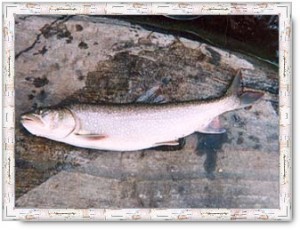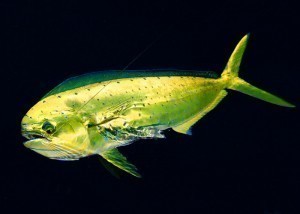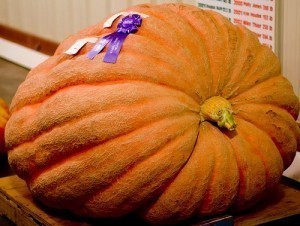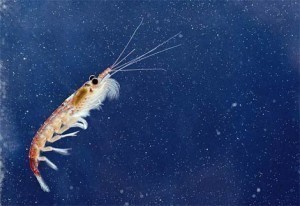Size of a Trout
The Trout belongs to the ray-finned fish family Salmonidae, the  same as the Salmon, but these two differ in that trout are a freshwater species while salmon mostly live in salt water (though born in freshwater). There are several varieties of trout belonging to different genera, each varying in size and weight.
same as the Salmon, but these two differ in that trout are a freshwater species while salmon mostly live in salt water (though born in freshwater). There are several varieties of trout belonging to different genera, each varying in size and weight.
Belonging to the Genus Salmo, the medium-sized Brown trout is native to both Asia and Europe. It can weigh not less than 20 kilograms in some areas, but commonly has an adult weight of 2 pounds (1 kg.) in smaller rivers. The Marble trout, the second largest species of European trout, has an average length of 30-70 centimeters. The Sevan trout of Armenia, named for its native Lake Sevan, matures to 90 cm. in length and a weight of 16 kg.
The next set of trout species belong to the Genus Oncorhynchus. Also known as the Arizona trout (being Arizona’s state fish), the Apache trout measures 6-24 inches (61 cm.) in length, rarely growing past 25 cm. although it is known to achieve 40 cm. in its native waters. The apache trout can weigh from 6 ounces to 6 lbs. (27 kg.). The Biwa trout, native to Japan’s Lake Biwa for which it was named, is actually a Cherry salmon subspecies and is also called the Biwa salmon. The adult of this species range in length from 40-50 cm. and weigh between 1.5-2.5 kg. Some specimens however can grow as large as 70 cm. and weigh 5.0 kg.
The Cutthroat trout is native to North America and has about 15 known subspecies. Depending on which subspecies it belongs to, an adult cutthroat can grow as long as 6 up to 40 in. (15-100 cm.). Also hailing from Northern U.S., the Rainbow trout comes in 13 to 18 in. (33-46 cm.) in length and weigh up to 2.5 lbs. (1 kg.). A subspecies of the rainbow trout, the California Golden trout has a length of 6-12 in. (15-30 cm.) and can weigh up to 11 lbs. (5 kg.). A relative of the rainbow and cutthroat trout, the Gila trout of Southwestern U.S. has an average size of approximately 11.8 in. (300.0 millimeter) and a maximum size of around 21.7 in. (550.0 mm.).
This last set belongs to the Genus Salvelinus, also referred to as chars. The Arctic char is relative to both the trout and the salmon, thus possessing many of the traits of both species. It can weigh up to 20 lbs. (9 kg.). The Aurora trout of Canada have an average weight of 0.5-1.5 kg, but some specimens can grow up to 3.5-4 kg.
The Brook trout, native to eastern North America, has an average length of 10-26 in. (25-65 cm.) and an average weight of 11 oz.-7 lbs. (0.3-3 kg.). It can however achieve a maximum length of 33 in. (86 cm.) and a maximum weight of 14.5 lbs. (6.6 kg.). The Bull trout of northwestern North America are known to grow up to a length of 41 in. (103 cm.) and weigh up to 32 lbs. (14.5 kg.). From northern North U.S., the Lake trout is considered the largest char of the genus Salvelinus, weighing roughly 102 lbs. (46.3 kg.).
Just as the trout is similar yet stands apart from other members of its family, the different branches of this species are likewise unique from each other in many ways, not the least in their sizes. It just goes to show how life underwater can be so closely related to each other and yet be so diverse at the same time.





